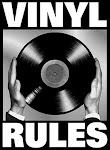.
This is a fantastic jazz-funk LP from Australia featuring Oz jazz legend Don Burrows on clarinet.
Continuing the series of rare mid-70s Australian jazz albums (also see my previous "Crossfire" posts), this is the third album from Sydney-based band Galapagos Duck from 1975. Formed in 1969, they were initially the house band at "The Basement", the city's main jazz venue. I used to come across them in my teens, often playing at outdoor festivals. This album features guest woodwinds player Don Burrows, something of a stalwart in the jazz scene of the time. The album was produced by Horst Liepolt for his 44 Records label - Liepolt seems to have been behind most of the city's jazz releases, festivals and venues in the 60s and 70s.
Some parts are funky as hell. It features the ubiquitous rhodes and wah-wah woodwinds of the period and has a good loose, live feel on most tracks, with little overdubbing. Strange mix of tracks as an overall album, though - sometimes it's riffing on contemporary forms, then suddenly lurches back to trad New Orleans, particularly when Burrows is on clarinet. Reading between the lines, this was a band that had to please many audiences to maintain a working lifestyle in a city that was just starting to develop a jazz scene that went beyond the ageing of classic forms - so there's still a bit of crowd-pleasing going on here. Nevertheless, enough good stuff here to make it worthwhile, and I like McNamara's work on keyboards in particular. [thanks to Simon666]
The long “St James Infirmary” has a very funky part with wild breaks ! Hypnotic bass lines, then drum break (several bars) then electric piano. Terrific. And damn funky.! The Latin jazz “Hey Timbales” is wild too. Almost batucada jazz. But the best here is “Squeelers and Grunters”, a masterpiece of funk from Australia. Listen to the bass, drums, buzz flute, and punchy horns. Hope you enjoy it!
Review (by DR Kinetic)
44 Records was arguably the most important Australian Jazz record label operating in Australia during the 1970s. Owned and operated by the renowned Jazz aficionado Horst Liepolt, it released dozens of albums and also re-released some important albums form the 1960s. Amongst the label's releases are some of the best jazz and jazz-fusion releases Australia ever produced, namely Peter Boothman – For the Record (1975), David Fennell and Powerpoint – Alternate Route (1976) and of course Galapagos Duck - St. James.
To my ears, I prefer this album to their more rated The Removalists. It’s more consistently listenable in my opinion. The title number St. James’ Infirmary is a great long jazz number with a number of compelling changes. It begins with the tune of ‘house of the rising sun’ played by sax in a traditional jazz mode before dropping into a 2 minute bass solo. When the bass finally cools down the drums kick in and the jazz-funk fest begins. I used this bit in my ‘Aussie Funk’ mix. There are a few hokey jazz numbers, a few fusion cuts and another great sinister funky cut that rounds the album out: Squealers and Grunters, with a dark piano-led intro that’s pretty ripe for sampling, and a nice quirky flute solo halfway through. Finally, their cover of JJ Walker's "Mr Bojangles" is commendable.
.
 This post consists of FLACs ripped from my super clean vinyl and of course includes full album artwork and label scans. Can't have enough of the 'duck' I say, so grab a copy now, before it flies away.
This post consists of FLACs ripped from my super clean vinyl and of course includes full album artwork and label scans. Can't have enough of the 'duck' I say, so grab a copy now, before it flies away..
Tracklist
01. 'St James Infirmary' (Trad, arr. Galapagos Duck)
02. 'Flutin' ' (Galapagos Duck)
03. 'Ivory Moss' (Tom Hare, Chris Qua, Marty Mooney)
04. 'For Elizabeth' (Galapagos Duck)
05. 'Hey Timbales' (Marty Mooney, Tom Hare, Chris Qua )
06. 'That Particular Model' (Paul McNamara)
07. 'What Am I Doing Here' (Paul McNamara)
08. 'Teo' (Paul McNamara)
09. 'Mr Bojangles' (J. J. Walker)
10. 'Squeelers and Grunters' (Galapagos Duck)
The Duck were:
Tom Hare - trumpet, drums, saxaphones, flugelhorn
Don Burrows - clarinet, baritone sax, 5 key school flute, cabasaMarty Mooney - tenor sax, flute, clarinet
Paul McNamara - electric piano, acoustic piano
Chris Qua - bass, bass violin, flugelhorn
Willie Qua - drums, flute, electric flute
































































